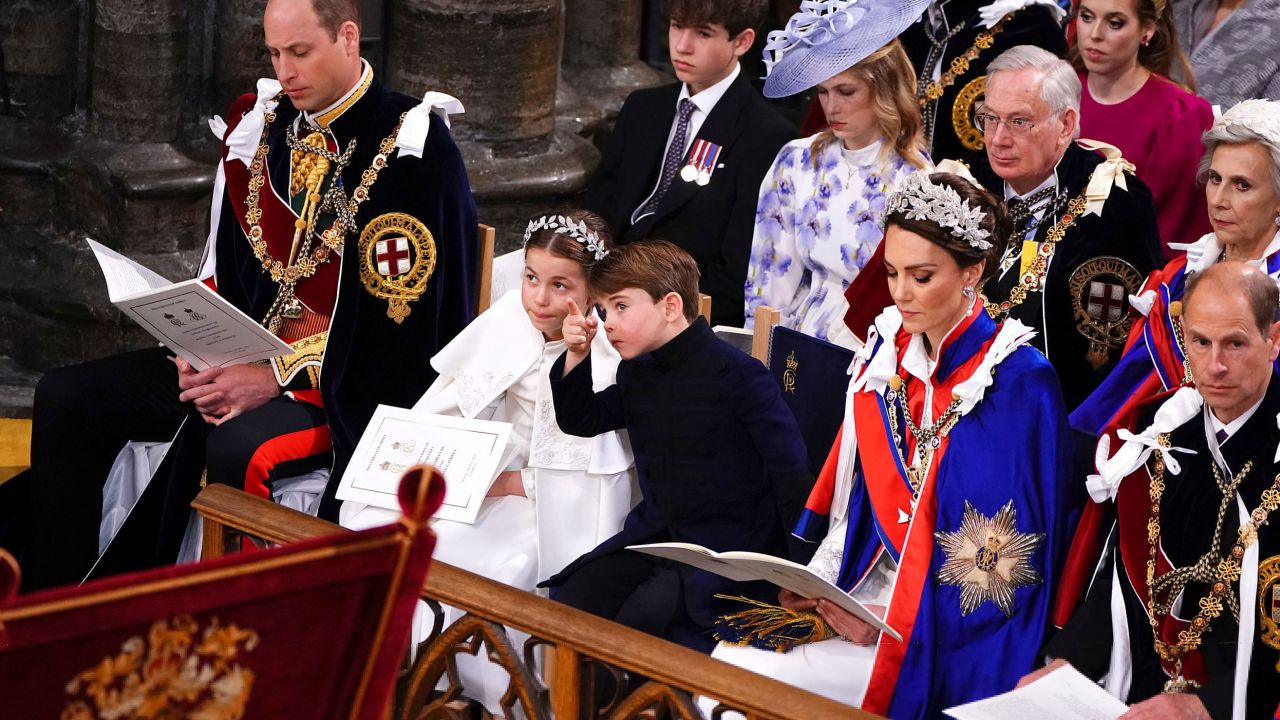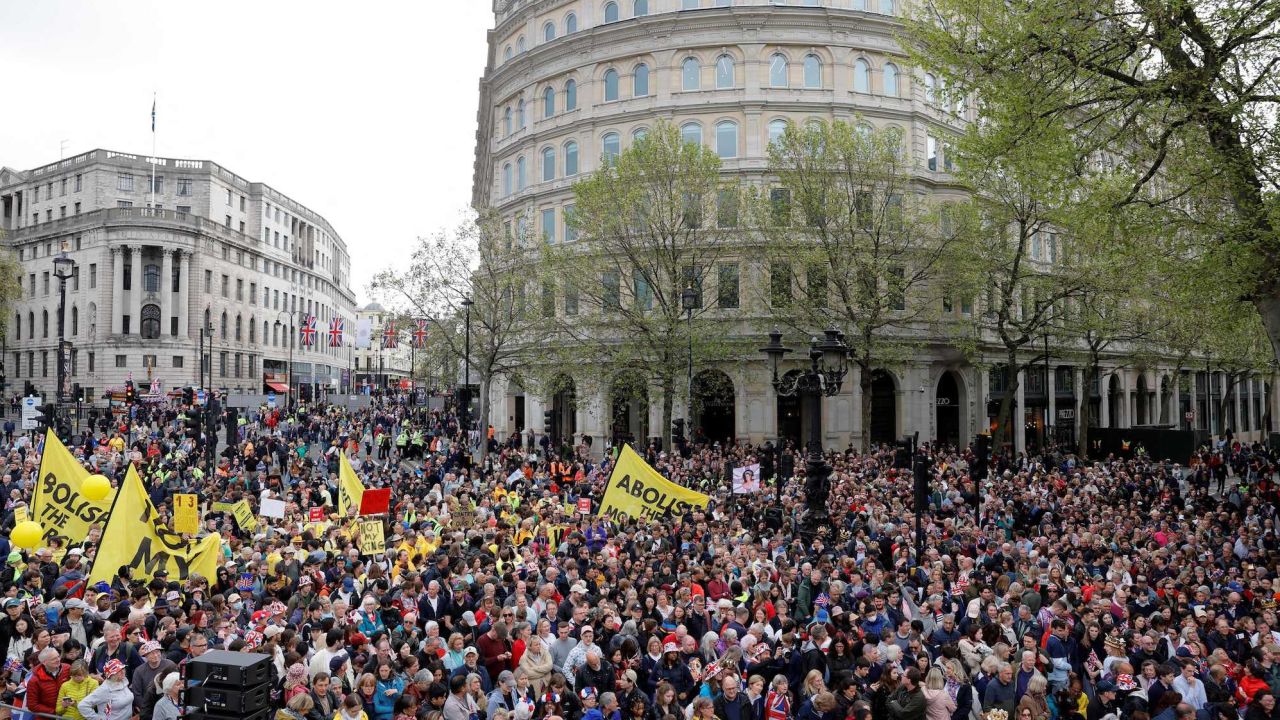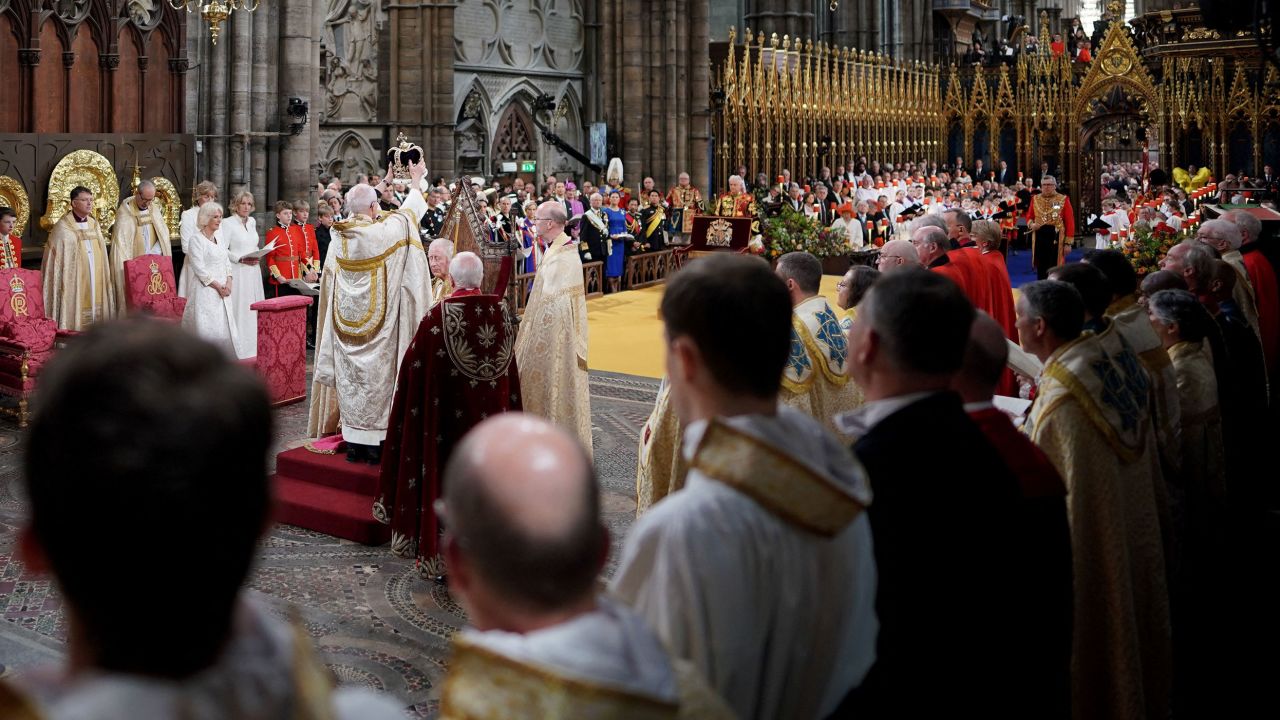Mayor of London Sadiq Khan, UK opposition leader Keir Starmer and Chancellor of the Exchequer Jeremy Hunt were also in attendance.
Approximately 100 of heads of states from around the world and dozens of members of foreign royal families traveled to London for the occasion.
Canadian Prime Minister Justin Trudeau, Australian Prime Minister Anthony Albanese, European Commission President Ursula Von der Leyen and European Council President Charles Michel all attended the service, as did French President Emmanuel Macron.
US President Joe Biden did not travel to London. Instead US first lady Jill Biden led the American delegation, sitting next to Ukrainian first lady Olena Zelenska.

Last to arrive, just before the King and Queen, were the most senior members of King Charles’ family, his siblings and children, including Prince Harry who traveled to the UK from the US without his wife, Meghan, the Duchess of Sussex and their two young children. Saturday is also Prince Archie’s 4th birthday.
Following the ceremony, Prince Harry did not appear on the Buckingham Palace balcony with his father and selected members of the family. CNN understands that the prince, who is no longer a working royal, did not receive an invitation to join the family for this moment.
The King’s younger brother Prince Andrew was also missing from the traditional balcony appearance. Andrew stepped back from royal duties in 2019 over his ties to disgraced financier and convicted pedophile Jeffrey Epstein. In January 2022, Andrew was stripped of his military titles and royal patronages after a judge ruled a sexual abuse civil lawsuit filed against him by Virginia Giuffre could proceed. The prince repeatedly denied any wrongdoing and the case was later settled out of court for an undisclosed sum.
Controversies ahead of the big day
Despite the splendor of the occasion, it has not been without controversy. Some have objected to millions of pounds of taxpayers’ money being spent on a lavish ceremony at a time when millions of Britons are suffering a severe cost-of-living crisis.
Security is by far the most costly element of large events and the Met said ahead of time that Saturday would be the largest one-day policing operation in decades, with more than 11,500 officers on duty in London.
Republic, a campaign group that calls for the abolition of the monarchy, said the idea of the “homage of the people” was “offensive, tone deaf and a gesture that holds the people in contempt.”
Some eyebrows were also raised earlier this week when a controversial and widely criticized UK public order bill came into force.
Since the death of Queen Elizabeth II last year, there have been a number of instances of anti-monarchists turning up at royal engagements to voice their grievances against the institution.
The new rules, signed into law by the King on Tuesday, just days before the coronation, empower the police to take stronger action against peaceful protesters.
Republic said it was expecting between 1,500 and 2,000 people to join an anti-monarchy protest at Trafalgar Square, just south of the royal procession route. On Saturday morning, Republic said on Twitter that organizers of the protest had been arrested shortly after the demonstration started – including the group’s leader, Graham Smith.

A further three people were arrested “on suspicion of possessing articles to cause criminal damage,” the force added. And “a number of arrests” have been made of people suspected of breaching the peace.
Despite the pomp of Saturday’s events, the King is facing significant challenges. A CNN poll has found that Britons are more likely to say their views of the monarchy have worsened than improved over the past decade.
The results of the survey, conducted for CNN by the polling company Savanta in March, show Charles’ heir Prince William is viewed with greater affection than his father.
Despite their cooler attitude towards the King, most Britons say they plan to take part in at least one event related to the coronation this weekend, the poll found, with many communities planning street parties and lunches.
Artists Perry, Richie and Take That will headline the “Coronation Concert” at Windsor Castle on Sunday evening and people have also been encouraged to use Monday, the final day of the long weekend, to volunteer in their communities.
CNN’s Lauren Said-Moorhouse, Max Foster, Catherine Nicholls, Lindsay Isaac and David Wilkinson contributed to this report.












